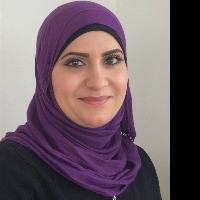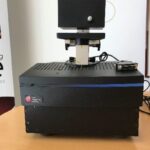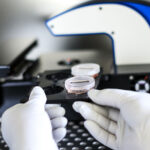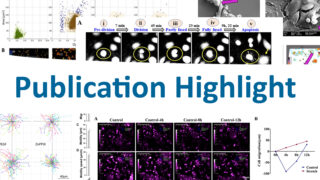Digital Holographic Microscopy for biomarker detection in cancer

Zahra El-Schich, post doc at Malmö University, is focusing on finding cancer cells circulating in the blood. She is using HoloMonitor to find the cancer cells. Zahra El-Schich believes that future research will lead to early prognosis of circulating cancer cells and individual cancer treatment. "In the near future", Zahra El-Schich says, "you could have a HoloMonitor in every clinic. You could also customize cancer treatment for every patient by just using a simple tumor test." Find out how.
Introduction
Cancer is the leading cause of death worldwide. In our bodies, there are 37,000 billion cells. Every cell is programmed to one specific purpose, a certain amount of cell divisions, and when to die. Inside every cell there is DNA. External factors such as pollution in the environment, smoking, smog, alcohol, some food, lack of exercise, stress, genetic heritage, certain viruses and others can affect the DNA and cause errors during cell division. This in turn increases the risks of having cancer.
Circulating tumor cells
Circulating cancer cells are cancer cells from an existing tumor, found in the blood. Only one single cancer cell, that has escaped from the tumor into the bloodstream, is needed for cancer to be spread. These circulating cancer cells end up in other organs; when they divide, a new metastatic cancer tumor is being evolved.
Ideal would be to find cancer cells circulating in the blood and treat cancer patients in a personalized way. Zahra El-Schich’ research is about finding a solution of treating cancer in a more efficient way and save cancer patients from unnecessary, and painful, cancer treatments.
Zahra: We all look different. Cancer, and cancer treatment differs from person to person. Today, when treating cancer, we give pretty much the same treatment to patients with similar cancer diagnosis. If it works then it’s fine, but if the cancer patient doesn’t react to the treatment, then the treatment is being changed to another combination of chemo, and if that doesn’t work then another treatment is being tried. During this process cancer cells often become resistant to the cancer treatment. The body gets exhausted since healthy cells and white blood cells also die during the treatment. Stem cells will produce new cells, but in the meanwhile the body is rather exhausted. I believe that we, in the near future, will be able to offer better and customized cancer treatments for a better and more cost-efficient cancer care and a better future for those diagnosed with cancer.

Tell me a bit about yourself.
My name is Zahra El-Schich. I’ve studied Molecular Biology at the University of Lund in Sweden. Ten years ago, I was looking for a biology project to work with, and I got in contact with Professor Anette Gjörloff Wingren; she works with the GlycoImaging project (read more about her project here). There was a new prototype of a microscope from Phase Holographic Imaging that needed to be tested. You had to do everything manually back then. Today, with the fourth generation HoloMonitor M4, things are much smoother. You can just prepare your cells, put them into the incubator and start recording the cells.
A few years and a couple of projects later I ended up here at Malmo University again with the project I’m working with now.


To the left you see one of two protypes of the first holographic microscopy developed by Phase Holographic Imaging. (Right) The latest generation holographic microscopy HoloMonitor M4 can be placed inside the incubator and the size fits in one hand.
Tell me about your project.
We are working on finding a method to detect circulating tumor cells in the blood.
In what way has HoloMonitor M4 helped you in your project?
With blood samples and DHM you can measure the cell volume and separate smaller cells from larger cells. Blood cells, for instance, are smaller than tumor cells. The main advantage with HoloMonitor is that it’s possible to analyze living cells during a long period of time – and you can record everything.
Would you be able to do your research without HoloMonitor M4?
No, not on living cells.
What do you think your results could lead to in the future?
In the near future, you could have a HoloMonitor in every clinic. Imagine using time-lapse recordings on tumor samples from patients. You could also customize cancer treatment for every patient by just using a simple tumor test. Then you could test different cancer treatments on the tumor sample, which concentration to use for instance, and see which treatment fits which patient. All patients are different. One patient might only need the lowest dose of chemo therapy, and another patient will need to have the highest dose, and for some patients the highest dose isn’t enough. Instead of testing on the patients live, treatments could be tested on the tumor sample. This would give every patient better cancer treatment and a better chance of being declared healthy, and also reduce risks like resistance to treatment.
We are all genetically different, and cancer heritage from different factors. Breast cancer for instance can be caused by hormones or genetical factors; therefore two people with the same diagnosis, like breast cancer, need different treatments. A sample can show which protein the cancer cells are carrying and help to choose treatment. Since we are different – why should we have the same cancer treatment?
How does it feel to work with this?
Great! It is a good thing to work with and I’d love to contribute to progress within cancer care. I just want things to move a bit faster!
Technology
Zahra El-Schich is using Molecularly Imprinted Polymers (MIP:s) designed to perfectly fit the cancer cell’s surface. With help from Digital Holographic Microscopy (DHM) and the time-lapse cytometer HoloMonitor (Phase Holographic Imaging) she can record when the MIP:s find the cancer cells.
MIP:s are attracted to sialic acid, a monosaccharide (sugar), found on the surface of all cells. Studies from late in 1980s have shown that cancer cells, and especially metastatic cancer cells, have an increased amount of sialic acid. Read more about the label-free technology here.


